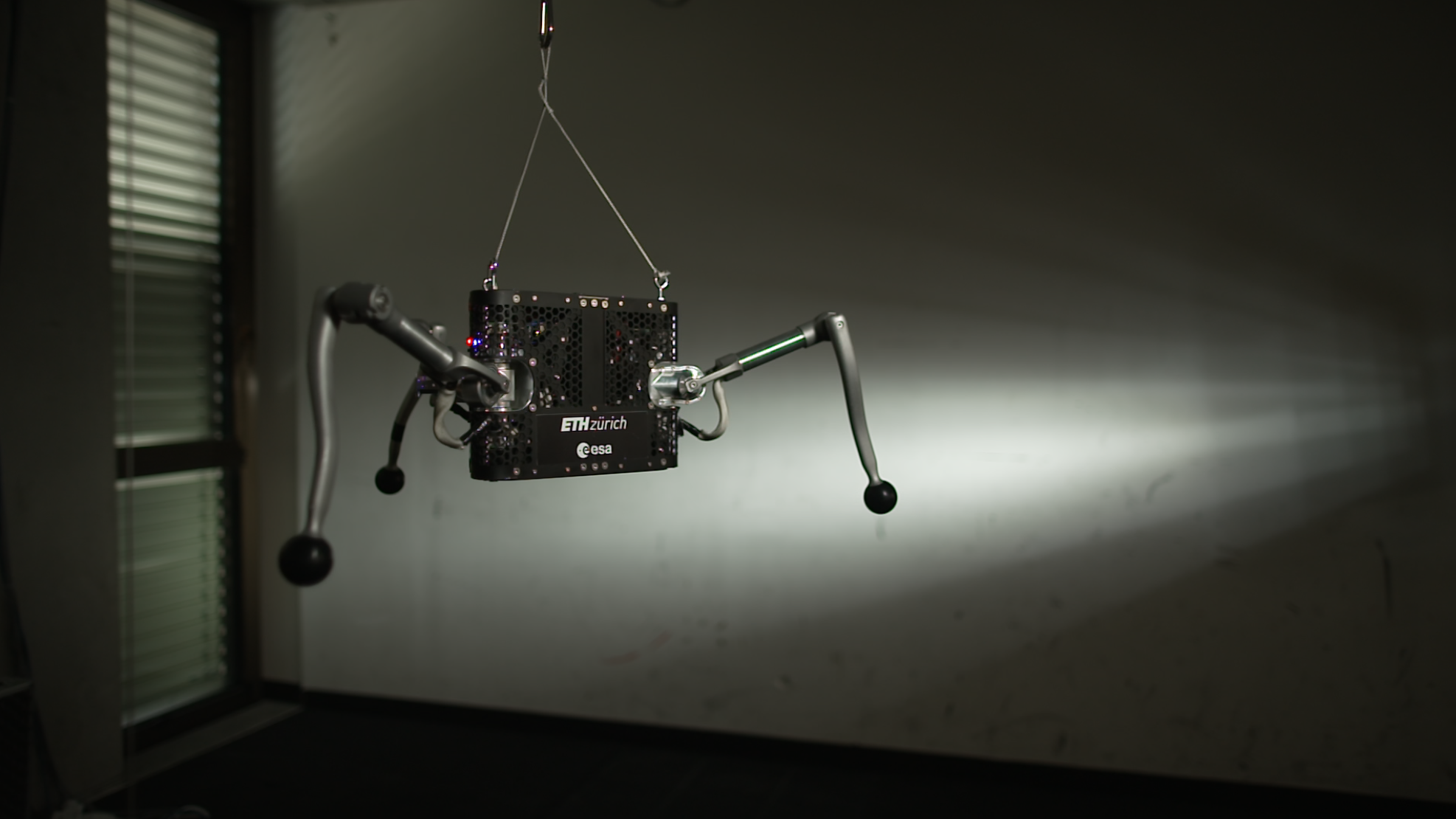Apollo mission astronauts who visited the moon between 1969 and 1972 found a hopping motion useful for navigating its surface, where the gravity is one-sixth of Earth’s.
Today, robots are playing a leading role in space exploration, and some are taking cues from those bunny-hopping astronauts.
That includes SpaceHopper, a three-legged robot designed for exploring microgravity environments, like the surface of asteroids.
Developed by university students at ETH Zurich, in Switzerland, it bends its legs to propel itself off the ground.
As it careens through the air, it flails its limbs like a falling cat trying to right itself, to stabilize itself in midair and land on its feet.
Technology like this bouncy bot could help humanity push further into the cosmos.
“We just can’t just send humans into space to do tasks that might be dangerous,” masters’ student Valerio Schelbert, who worked on SpaceHopper as a systems engineer, told CNN. “But we can build robots that could do this task for us.”

“A completely new idea”
Several countries have explored asteroids to try to glean more information about Earth’s origins, and some companies, like the California-based startup AstroForge, are planning to mine asteroids for their valuable metals.
An asteroid-exploring SpaceHopper could be equipped with various sensors to capture information, said Schelbert.
He added that one day minerals mined in space could be used for building there – instead of lugging them up from Earth.
Leaping locomotion has been used to explore asteroids before. In 2018, Japan deployed hopping rovers on a near-Earth asteroid called Ryugu, including the Germany-France developed Mobile Asteroid Surface Scout (MASCOT), which bounced and righted itself by rotating a swinging arm.
ETH Zurich students say SpaceHopper – which was trained using reinforcement learning, a technique that teaches AI to make decisions based on trial and error – allows more controlled movement than past asteroid explorers.
“So, when we want to go to that crater, we can go to that crater,” said Schelbert.
A three-legged hopping robot that can reorient itself in zero gravity is “a completely new idea,” said Florian Kehl, a lecturer in the Department of Earth and Planetary Sciences of ETH Zurich.
From SpaceHopper to LunarLeaper
Late last year, SpaceHopper got its first taste of weightlessness on parabolic flights, in which a plane moves in steep roller-coaster-like motions to create periods of weightlessness.
The academics gasped as their feet lifted off the ground. But they were perhaps more impressed by SpaceHopper, which demonstrated its jumping and reorientation skills during a series of experiments.
“We were really astonished,” said Schelbert. With the success of the parabolic flight testing, SpaceHopper has reached its current potential, and the project is wrapping up, he added.
But what they’ve learned is being used to develop a new robot, the LunarLeaper, which he hopes could be put to use in the coming years.
The 10-kilogram (22-pound) tripod robot, based on SpaceHopper’s design, has been selected by the European Space Agency (ESA) as a contender to go to the moon.
ESA plans to send the first European astronaut to the moon by 2030, and it’s using robots as scouts to prepare.
The team behind LunarLeaper, including ETH Zurich academics, hope to use it to explore a pit thought to be connected to a subsurface hollow lava tube.
Some scientists hope lava tubes can house a future lunar base, protecting astronauts from the harsh environment of the moon.
Schelbert hopes the work done on SpaceHopper will be pivotal for helping future space exploration – perhaps even helping “humanity to become maybe [an] interstellar society,” he said.
Want to learn more about SpaceHopper? Vote here to see the technology featured in a special television episode of Tech for Good that will air in November.




